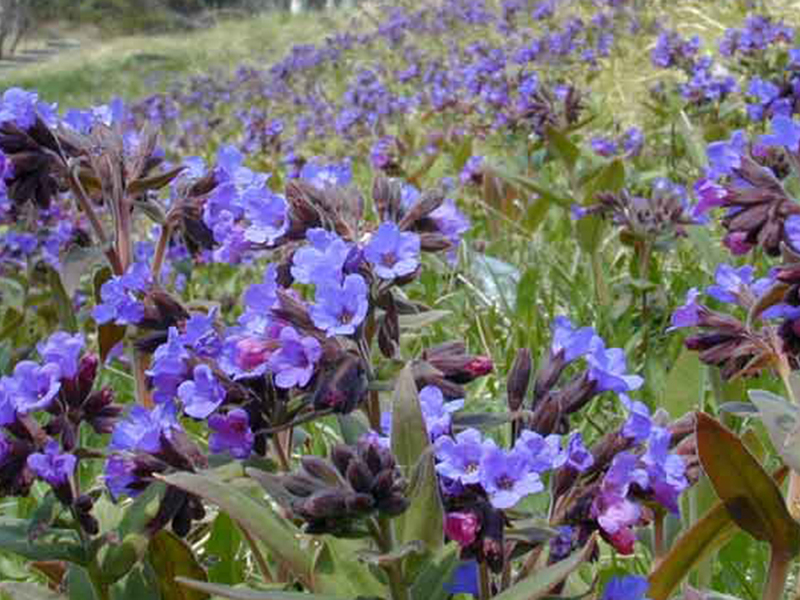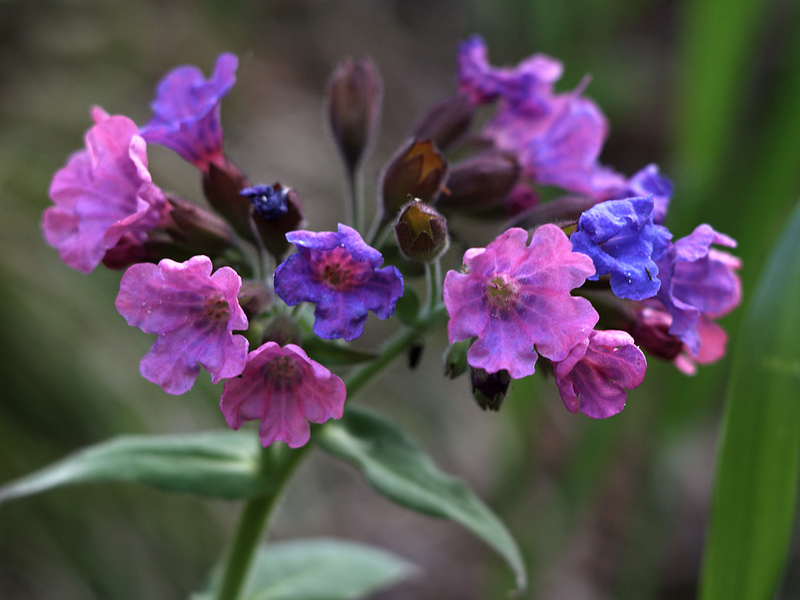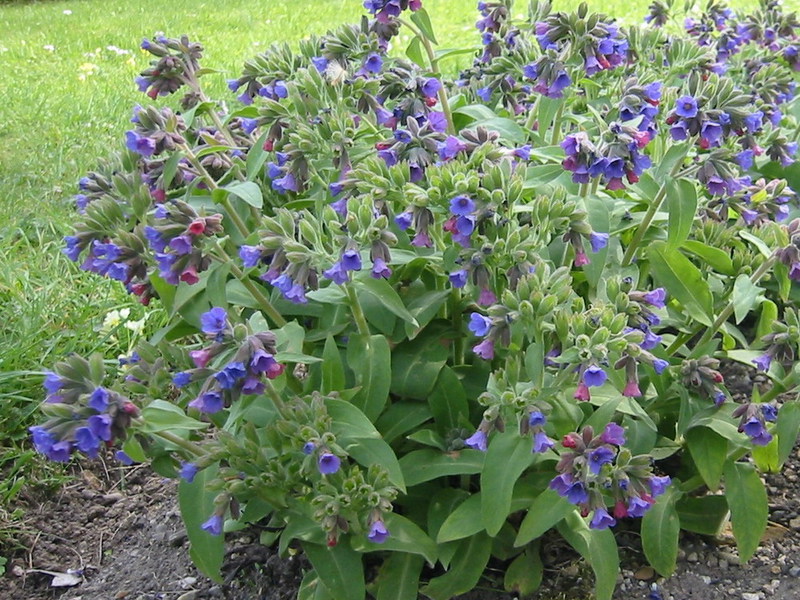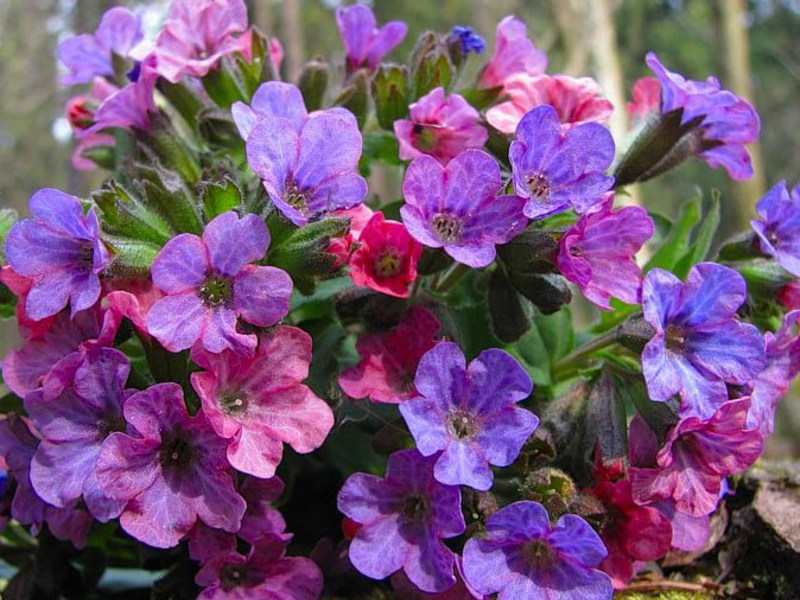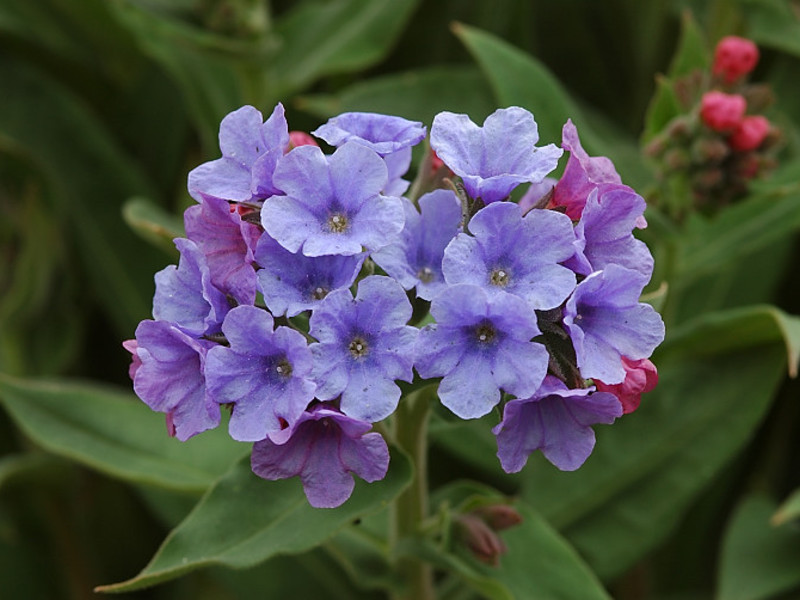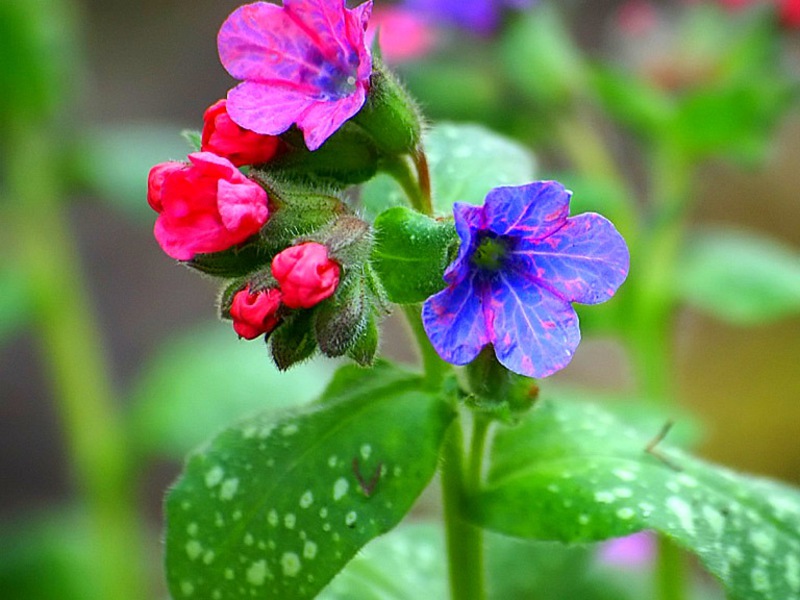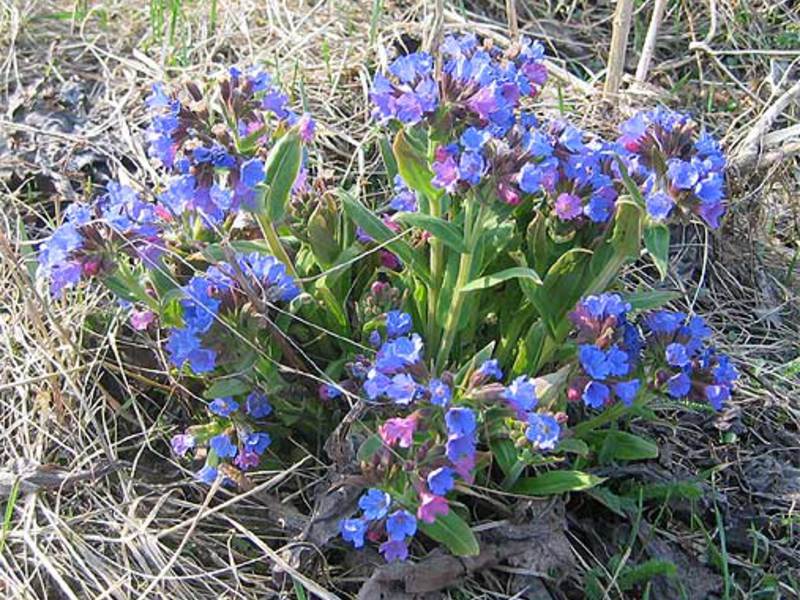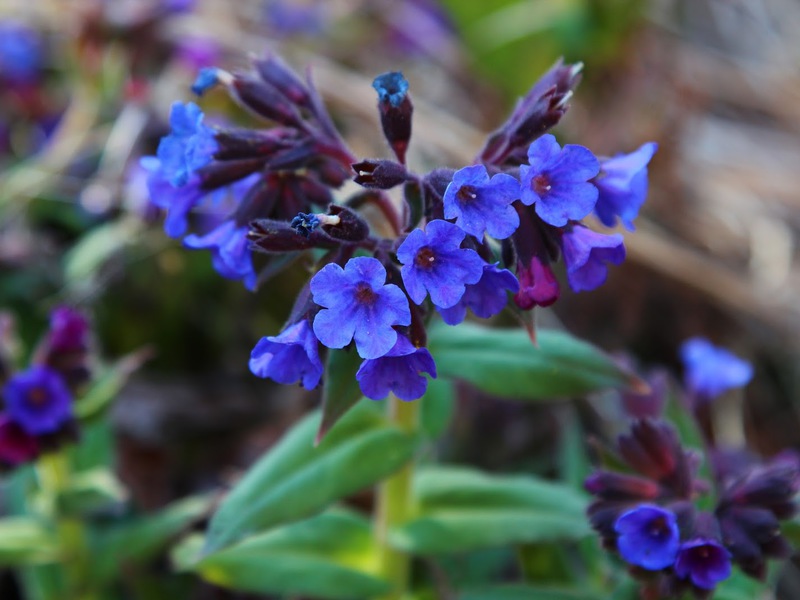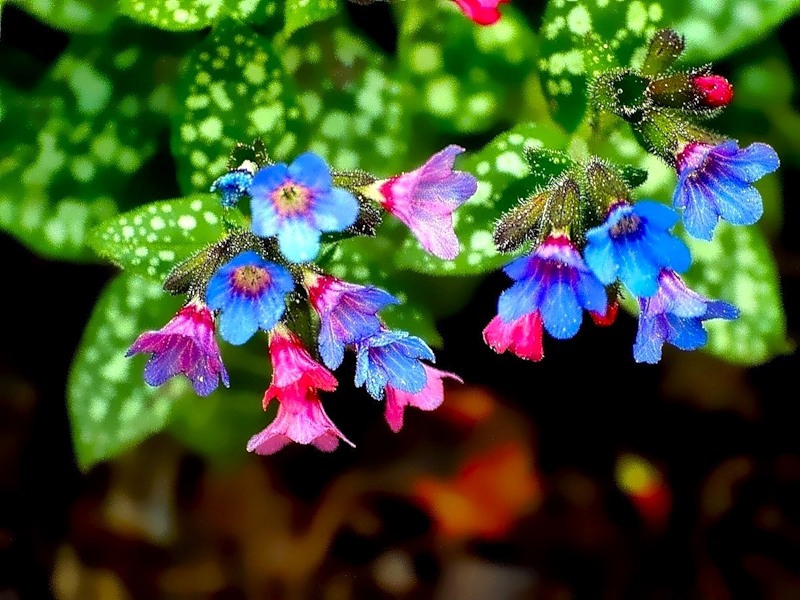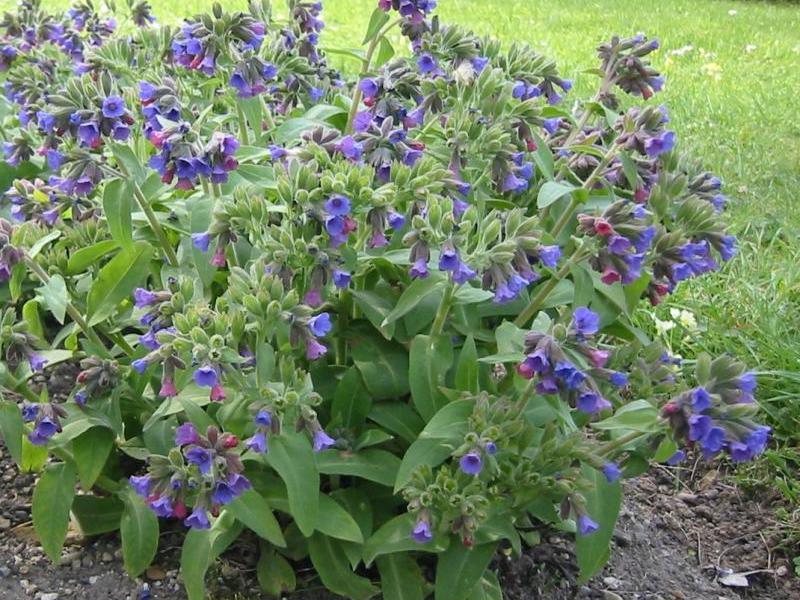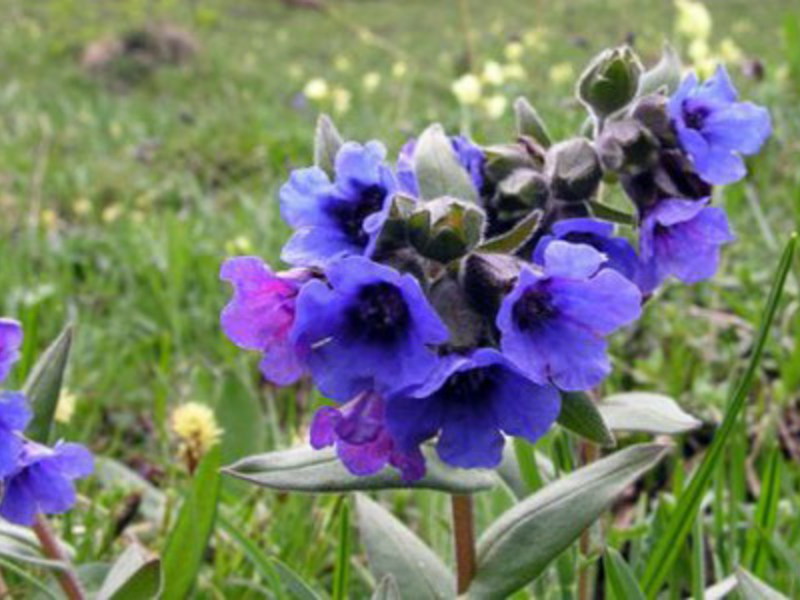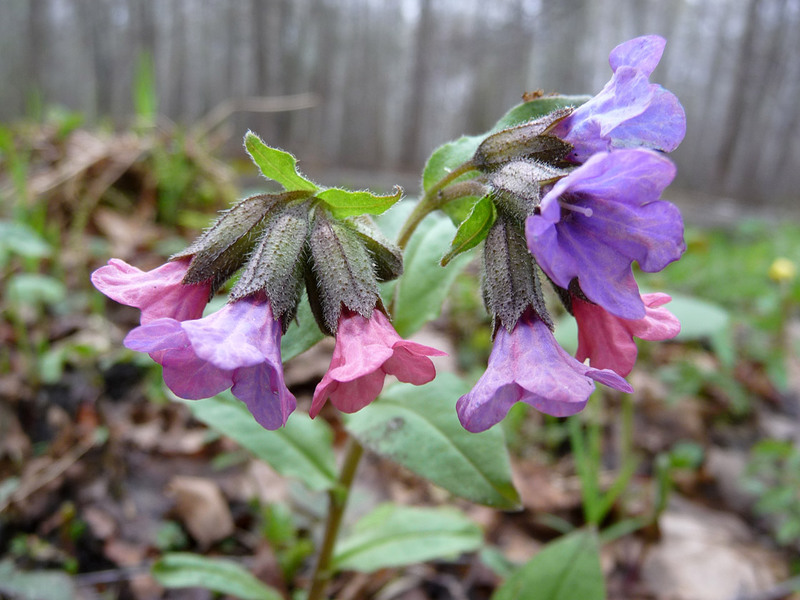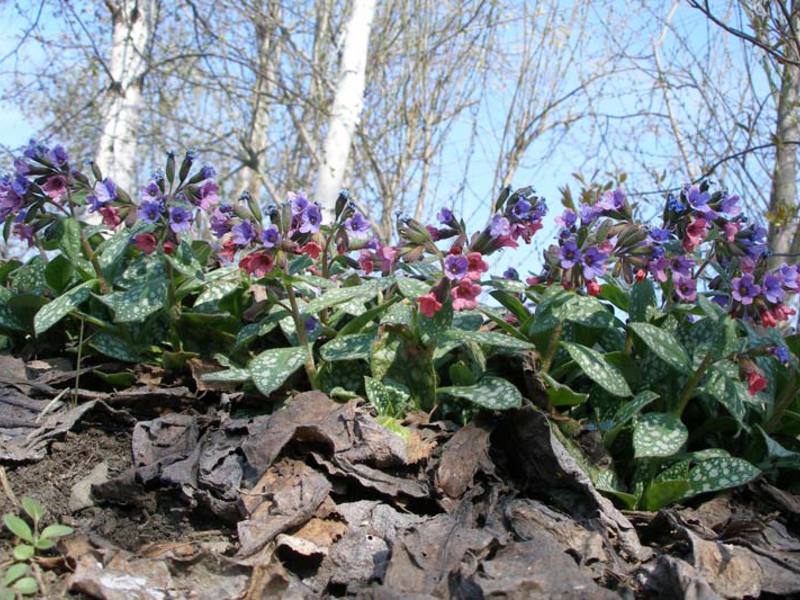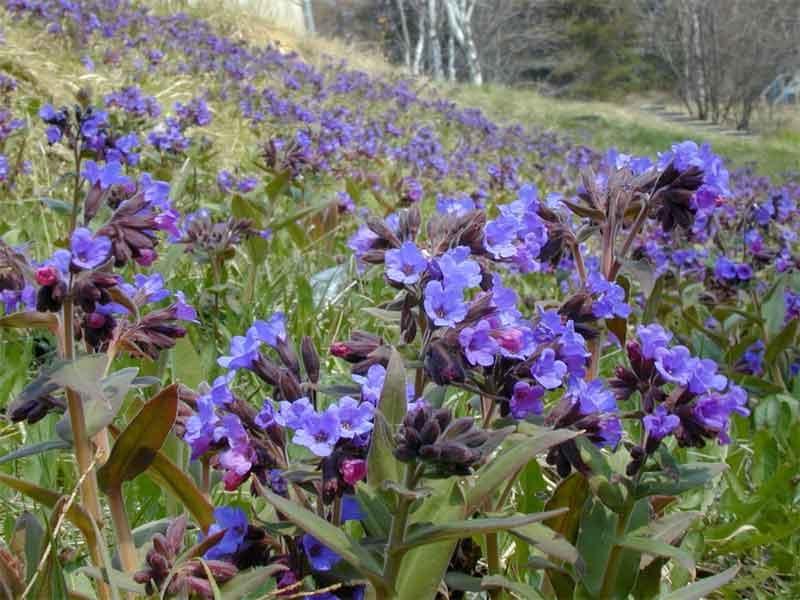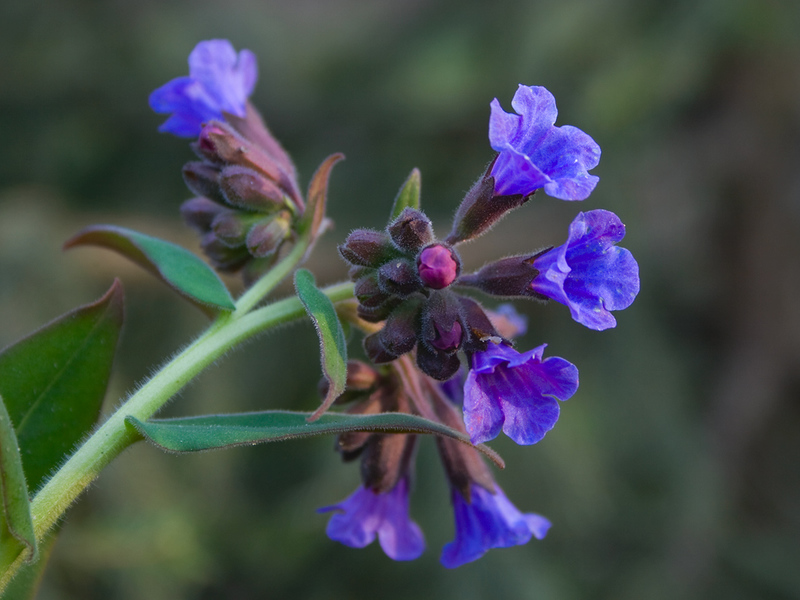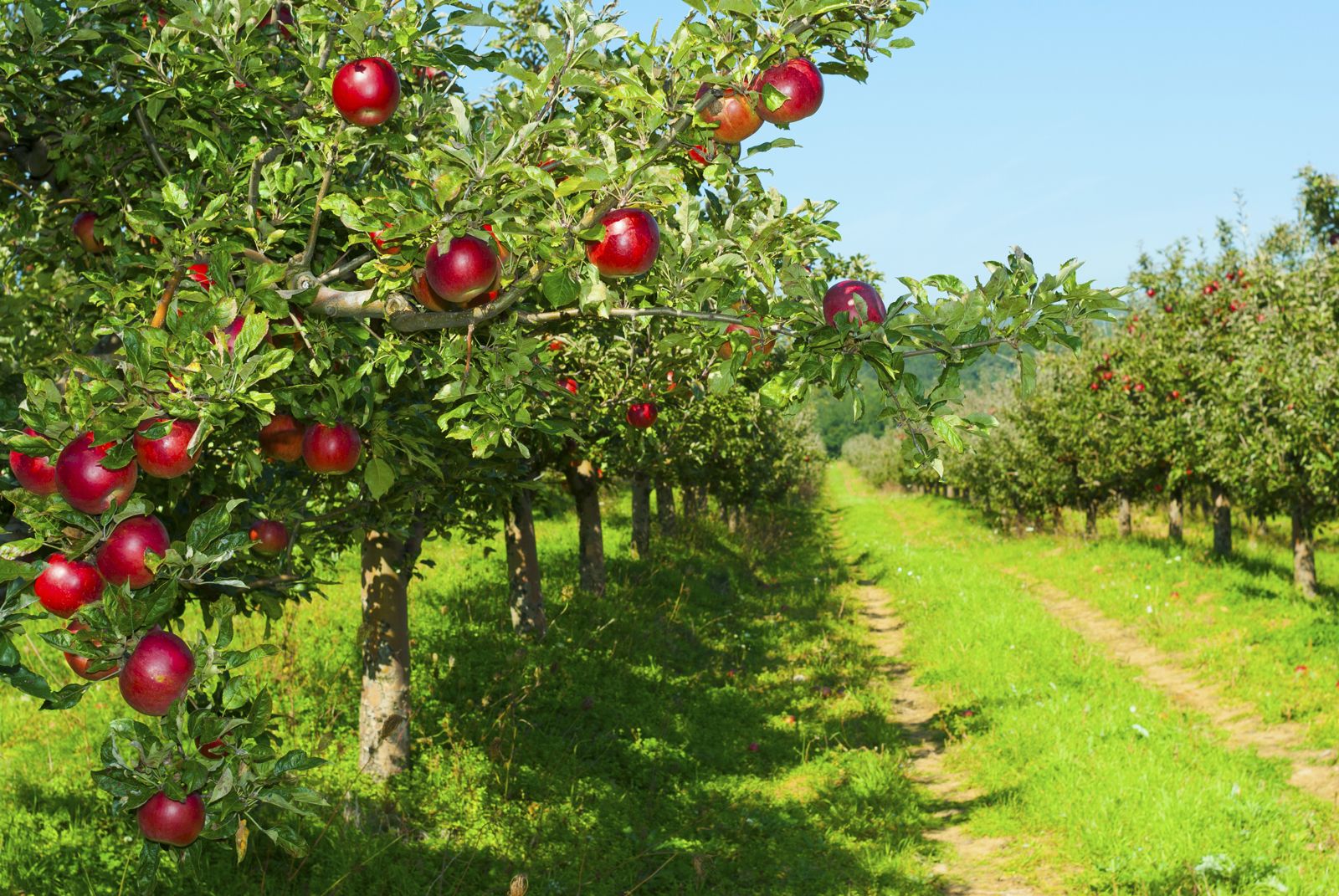Medunitsa is a representative of the Burachnikov family. This is a low-growing plant, the height of which does not exceed 30 cm. The flower has a stem covered with short hairs and a rather thick rhizome. The leaves of the medunka are sessile, with a delicate downy, the lower ones are with white spots. Crimson, purple or blue bell-shaped flowers are located on the tops of the twigs.
The lungwort bears fruit in July. Plant can be seen in mixed forest, on forest edges, clearings and bushes. In former times, the flower was considered a modest representative of the forest flora. It was he who first appeared on the edges after the snow melted.
More recently, hardly any gardener planned to grow this plant on his site, however, thanks to the breeders who cultivated wild lungwort, now the flower beds are full of a variety of different types of flowers.
Content
Medunitsa - description, planting and care
The leaves of the garden lungwort acquired a decorative look and differ in a variety of patterns... They can be speckled, with specks, dots, etc. Also, experts have achieved an extension of the flowering period up to 30 days. The color and size of the inflorescences also changed for the better. But like its forest "sister", garden lungwort is still a gorgeous perennial honey plant.
In nature, there are about 15 species of lungwort and another 20 bred by breeders as an ornamental garden plant. The flower has many names among the people, one of which is Pulmonaria - which means "lung". It was the ability to treat lung diseases that made the plant so popular.
Characteristic features of lungwort:
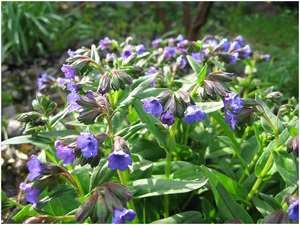 The height of the plant, as a rule, is not more than 50 cm, although there are also specimens with a stem length of up to 80 cm.
The height of the plant, as a rule, is not more than 50 cm, although there are also specimens with a stem length of up to 80 cm.- The rhizome is long, with small tubers.
- The leaves are lanceolate-wedge-shaped, most with a downy.
- The structure of the flowers is different: some have short pistils and long stamens, while others have the opposite. This prevents self-pollination.
- Flowers located at the very tops are always paired.
- The fruit of the plant is a sickle-shaped single-seeded pod.
And what is most interesting - on one stem and in one inflorescence can be located flowers of different tones and shades: from dark purple to pale pink. This is explained by the fact that the plant contains anthocyanins (plant pigments), which are responsible for the color of the petals. Since the acidity of young flowers is high, their petals are pale pink, and the low acidity of mature flowers gives them a dark purple or blue hue.
This is what prompted scientists to work on the creation of modern plant varieties suitable for growing in flower beds, flower beds and gardens. After all, lungwort, growing in deciduous and coniferous forests of Europe and Asia, is not suitable for cultivation in cultural conditions, since these flowers prefer moist sandy or loamy soil.
An ideal option for garden lungwort is loose, slightly acidic soil with a high humus content.
Medicinal properties
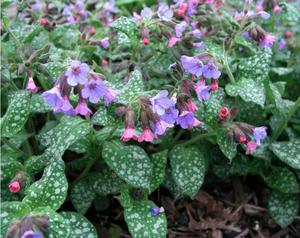 The healing properties of the plant are legendary. It is known that Paracelsus, a famous healer of antiquity, used lungwort as a remedy for pulmonary diseases.And the herbalist Hildegard Bingent, who lived in the XI century, was one of the first to use the plant for the treatment of lung diseases.
The healing properties of the plant are legendary. It is known that Paracelsus, a famous healer of antiquity, used lungwort as a remedy for pulmonary diseases.And the herbalist Hildegard Bingent, who lived in the XI century, was one of the first to use the plant for the treatment of lung diseases.
Thanks to the various trace elements that make up the lungwort, the plant is successfully used in regulating the activity of the endocrine glands, stops bleeding and enhances the formation of blood cells. The presence of tannins in the herb explains its anti-inflammatory and astringent properties. The infusion of the plant is also used for stones in the bladder and kidneys, bloody urine and as a diuretic (for inflammation of the kidneys).
Infusions and decoctions from the plant have anti-inflammatory and diuretic properties, have wound healing and antitussive action... A leaf of lungwort, applied to the cut, promotes its early healing, showing even greater effectiveness than using plantain or Kalanchoe.
All parts of the plant are used as a healing material: leaves, roots and buds. Raw materials are dried at a temperature not exceeding 40 ° C in a well-ventilated area and stored in fabric or paper bags, after being chopped.
Infusion of herbs widely used in the treatment of the following diseases:
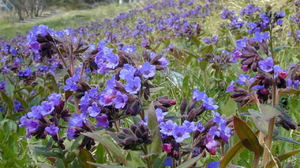 laryngitis;
laryngitis;- pleurisy;
- bronchial asthma;
- bronchitis;
- cardiovascular diseases;
- uterine bleeding;
- tuberculosis;
- bronchitis;
- thrombophlebitis;
- BPH;
- thyroid disease;
- anorexia;
- pneumonia;
- anemia;
- kidney disease;
- cystitis;
- dysentery;
- hemorrhoids;
- purulent wounds, ulcers, abscesses.
To prepare the infusion, you need to take 1.5-2 tbsp. l. chopped dry grass and pour boiling water (2 tablespoons), leave for 2 hours, drain. Take 3 times a day 20-30 minutes before meals, 0.5 cups.
For rinsing, baths, washing and lotions, use an infusion of greater concentration (4 tablespoons of herbs / 2 tablespoons of boiling water).
Lungwort juice is used as an antiseptic for wounds... For the speedy healing of pustular wounds, it is necessary to grind the leaves and apply the resulting gruel to the wound.
Regardless of the duration of the use of lungwort as a therapeutic agent, no side effects were noticed.
When treating lung diseases, the plant is recommended to be used in conjunction with herbal infusions that strengthen immunity: action; rosehip; black elderberry syrup; echinacea purpurea; clover; needles; currants, etc.
To medicinal types of lungwort include the following:
- sugar honeycomb;
- red;
- long-leaved;
- softest;
- unclear;
- medicinal;
- soft.
Although all these varieties have different properties and affect the body in different ways, they are called by one phrase: medicinal lungwort.
Breeding species of lungwort
To date, medicinal lungwort is grown in artificial conditions, along with other breeding varieties.
There are a huge number of flowering and variegated species, the most popular of which are the following:
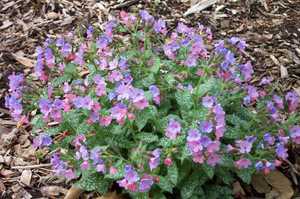 Golden Haze the edges of the leaves are yellow; ·
Golden Haze the edges of the leaves are yellow; ·- Mrs. Moon. A variety with lush, graceful leaves and reddish-purple flowers;
- Berries and Cream Majesty. The foliage is completely silvery; ·
- Little Star. David Ward. It has leaves with a white border and silver spots;
- Silver Shimmer 's - leaves have curved edges; ·
- May Bouquet;
- Northern Lights Bowles Red;
- Argentea Group. The unbudged buds are red, the opened flowers are dark purple. Leaves are silvery, abundantly spotted; ·
- Janet Fisk;
- Dora Barnsfeld - light pink flowers; ·
- Silverado. One plant combines flowers of pink, blue and white, silvery leaves with a green border.
- Margery fish
Growing lungwort
It should be borne in mind that some types of lungwort tends to "creep" over the site (m. red, m. medicinal and m. valovidnaya), therefore, it is necessary to prepare a more spacious area for them.
When choosing a planting site, it should also be borne in mind that garden lungwort does not tolerate heat and direct sunlight. Excessively moist soil can also harm flowers.
The lungwort grows well in slightly acidic or alkaline soil, with a high humus content.
Care of the lungwort flower
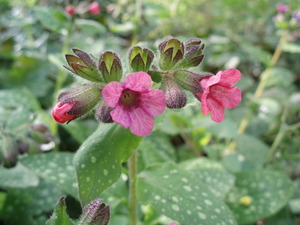 In dry weather, the plant requires regular watering. Humus should be added from time to time. During the period of intensive foliage growth, the grass must be fed with mineral fertilizers at the rate of 15-20 grams per 10 liters of water... A portion is enough for 1 m2. Overgrown shoots, if necessary, can be chopped off with a shovel.
In dry weather, the plant requires regular watering. Humus should be added from time to time. During the period of intensive foliage growth, the grass must be fed with mineral fertilizers at the rate of 15-20 grams per 10 liters of water... A portion is enough for 1 m2. Overgrown shoots, if necessary, can be chopped off with a shovel.
Varieties and hybrids of m. Soft and m. Valovid need additional shelter for the wintering period. When preparing for winter, it is advisable to mulch all types of lungwort with peat.
In no case, do not pick off the leaves of the narrow-leaved lungwort.
Reproduction
The plant can be propagated in two ways: by seed and by dividing the bush. Lungwort reproduces especially well with freshly harvested seeds. The grown seedlings dive. The distance between them should be 5-8 cm.
All varieties reproduce by segments of rhizomes at the end of summer. Landing is carried out at a distance of 15-20 cm to a depth of 3-4 cm.
Application
Due to the fact that the leaves of the plant do not lose their decorative effect for a long time, the planting of lungwort is used to decorate rocky hills and borders. Narrow-leaved and red lungwort can be used as groundcover for shaded areas, the softest lungwort will decorate flower beds both in open areas of the garden and in the shade.
Diseases and pests: in wet and cold years, there is a high probability of being affected by powdery mildew.
Having planted this improved plant in your garden, you will not only admire the grace and beauty of a modest forest flower, but also get an excellent medicine for all occasions.
